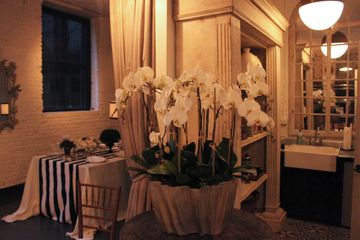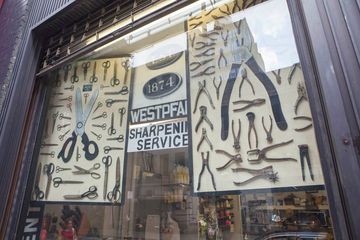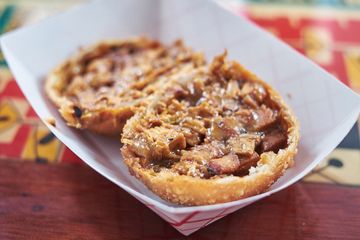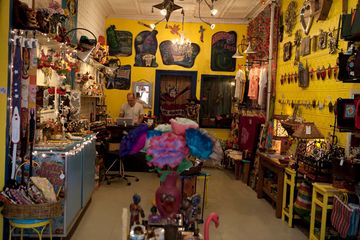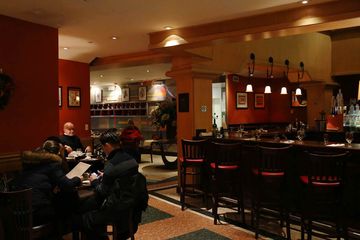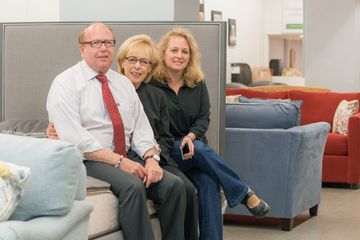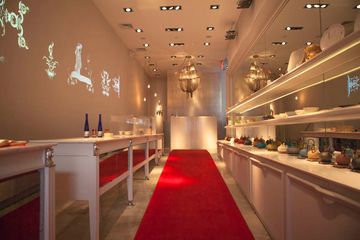On a street full of family-owned businesses and long-lasting neighbors, Long’s Bedding is yet another that merits a shout out for its “Long-evity. ” The mattress center has been around for four generations, starting with Max Long, the great-grandfather of the current owner, Terri. Max emigrated from Poland and started putting his skills as a mattress maker to use in 1911. In 1936, Max’s son Harry turned the business towards retail. The business had floundered during the depression, but after World War II, Harry was able to build it back up until he was able to buy out his brother and father. In 1963, a year after the business moved to its current location on 72nd Street, Harry’s son Bob started working as a delivery truck driver. We met Bob, who still works in the store despite having passed the torch on to his daughter, Terri, as well as his wife, Judie, who helps sell the mattresses when she is not working as a photographer. Judie showed us the historical prints on the wall, including Yellow Pages advertisements for Long’s from a century ago and a photograph of Max Long. She also gestured to the wall of photos of celebrities who have bought Long’s beds. The list is quite lengthy, including John Kennedy and John Lennon. My favorite celebrity story was the one about Mick Jagger, who ordered a wall-to-wall mattress. Though Judie says they have not received a request as outlandish as that in a while, they still help customers with many antique beds that often come in unusual dimensions. She explained that customers, including the stars on the wall, often find Long’s via word of mouth and interior designers. Long’s is one of the last small, independently-owned mattress sellers in the city, since mattress chains are unfortunately driving the smaller shops out of business. Judie said that she believes that the reason they still remain is because “New Yorkers are smart. ” She elaborated by explaining that if she shows customers a better mattress than the one they have been sleeping on, made by a small producer, they will buy it, despite the lack of recognizable brand name. Judie referenced the Sleepy’s across the street and said, “Customers walk in there to look, and walk in here to buy. ”Whereas Judie gave a lot of the credit to the store’s clientele, it was clear to me that the family’s warmth and personal attention are equally deserving. Judie agreed and said simply, “We care. When someone comes back and tells us they’re happy, it makes us happy. ” Customers are treated with kindness: Judie told us about a woman who came in, slightly distraught after losing her wallet, whom Judie sat with and spoke to until she calmed down. The woman has come back to buy mattresses at every stage of her life, and says she never will forget that day. Judie shared another one of her favorite stories, in which a woman bought a new bed from Long’s. Two years later, Judie was helping her daughter buy an apartment, and discovered the broker was this same customer. The woman exclaimed, “You changed my life! ” and started describing how her quality of sleep had improved thanks to the bed she bought at Long’s. Bob also had a story that shows what an amazing network Long’s customers have created: A woman came in to look at a mattress. She saw a woman she knew and greeted her, asking what she was doing there. The second woman replied, “I’ve been shopping here for thirty years: It’s an Upper West Side institution. ” The comment sealed the deal and the first woman bought the mattress. “We try really hard to please every customer, ” Terri interjected. She went on to tell me that she has childhood memories of being fascinated by the parade of mattresses that her father carried up and down the stairs when he was treating the basement of his family home like a warehouse. There were additional indications from Terri’s early life that she would one day own the family business. For example, Judie told us that her daughter used to sit at Bob’s desk when she was small and “make a whole mess. ” It is really touching to see how Terri’s parents have entrusted the operation of Long's to their daughter. “Terri runs the show now, ” Judie stated, and smiling, she added, “I like to make her look good. ” Similarly, Bob has passed over the responsibility to Terri and now functions as her constant mentor and source of support. I was curious to know if the family thinks that a fifth generation of mattress salesmen/women is in the cards. Olivia, Terri’s daughter, is still too young to show any signs of taking over the family business, but the Longs do sell a mattress called the “Olivia, ” so perhaps it is an omen.
